Cirsium arizonicum, Arizona Thistle
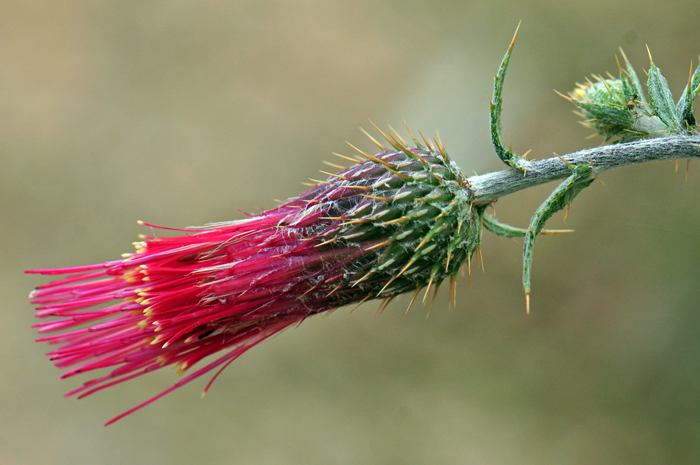
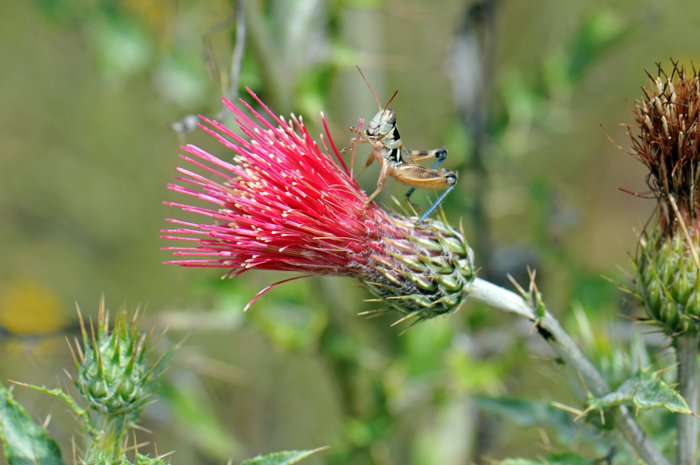
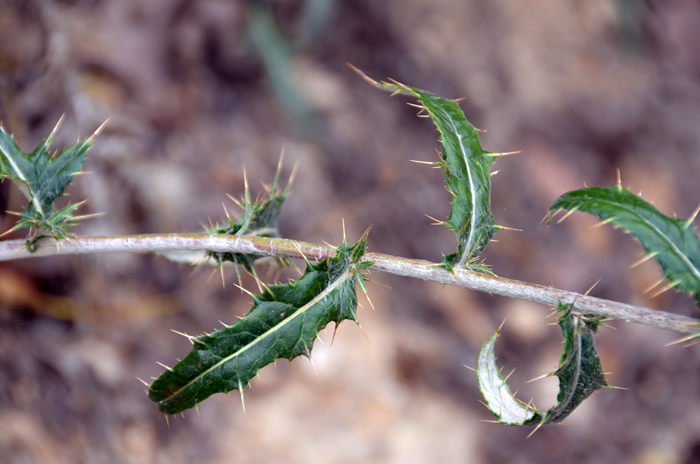
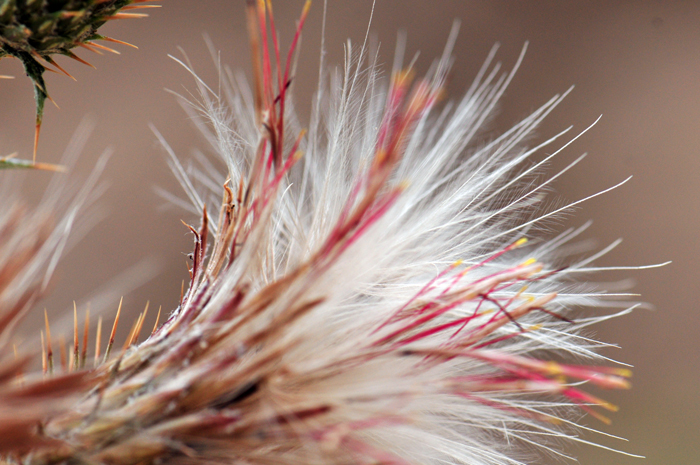
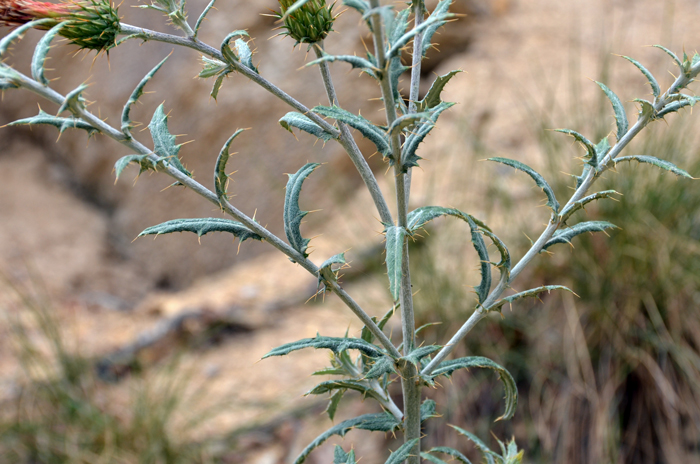
Scientific Name: Cirsium arizonicum
Common Name: Arizona Thistle
Also called: Spanish: Cardo Santo
Family: Asteraceae, Sunflower Family
Synonyms: (Cirsium arizonicum var. arizonicum, Cirsium arizonicum var. nidulum, Cirsium nidulum, Cnicus arizonicus)
Status: Native
Duration: Perennial or biennial.
Size: 1 to 4 feet (30-90 cm) or more; (5 feet, 150 cm) in height.
Growth Form: Forb/herb; spiny all over, basal rosette with 1 or more stems, erect or ascending, tomentose or glabrous; stems woolly to cobwebby.
Leaves: Green; basal leaves sessile, 4 to 8 inches (10-20 cm), some lobed, tomentose, spiny; cauline leaves alternate; leaf shape variable, linear, elliptic or oblong, sharply toothed, upper leaves more glabrous, clasping, spines along margins.
Flower Color: Red, pink, purple or lavender (rarely white); 1 to 100 erect heads; disk florets only; corolla tube shaped; phyllaries ovate or lanceolate; fruit is a brown cypsela with a pappus of plumose bristles.
Elevation: 3,000 to 12,000 feet (900-3,600 m)
Habitat Preferences: Sunny open areas, woodland openings and rocky slopes; wide variety of upland habitats; upper deserts, pine, pinyon-juniper and chaparral communities.
Recorded Range: Arizona Thistle is found in the southwestern United States in AZ, CA, NM, NV and UT. In Arizona, it is found in higher elevations in the northern and southern parts of the state. It is also native to northwest Mexico.
North America & US County Distribution Map for Cirsium arizonicum.
North America species range map for Cirsium arizonicum:
North American range map courtesy of Virginia Tech, Dept. of Forest Resources & Environmental Conservation
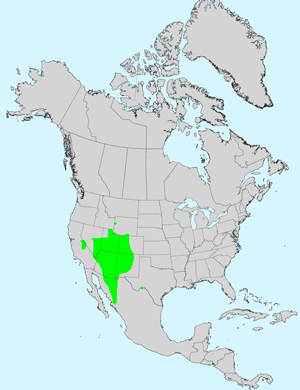
Threatened/Endangered Information: Cirsium arizonicum var. tenuisectum∗, Desert Mountain Thistle is listed with a California Rare Plant Rank: as 1B.2 “Fairly endangered” in California.
∗Note: This variety is known in California only from the New York Mountains of San Bernardino County. The name Cirsium nidulum has long been misapplied to this species. May be distinctive enough to be its own taxon and not a variety of Cirsium arizonicum
U.S. Weed Information: Unknown
Invasive/Noxious Weed Information: In North America the genus Cirsium is listed as a Noxious Weed by the States of:
Plants included here are invasive or noxious. See the Comments: section below for additional information regarding “noxious” thistles.
Wetland Indicator: In North America Cirsium arizonicum has the following wetland designations:
FAC = Facultative, occur in wetlands and non-wetlands
FACU = Facultative Upland, usually occur in non-wetlands, but may occur in wetlands
Genus Information: In North America there are 91 species for Cirsium. Worldwide, The Plant List includes 481 accepted species names and a further 812 scientific names of infraspecific rank for the genus.
The genus Cirsium was published by Philip Miller in 1754.
In the Southwestern United States: Arizona and New Mexico each have 19 species of genus, California has 26 species, Nevada has 16 species, Texas has 12 species, Utah has 23 species. All data approximate and subject to revision.
There are 5 varieties of Cirsium arizonicum in Flora of North America;
Cirsium arizonicum var. rothrockii, (AZ, NM);
Cirsium arizonicum var. arizonicum, (AZ, CA, NM, NV, UT);
Cirsium arizonicum var. chellyense, (AZ, NM)
Cirsium arizonicum var. bipinnatum, (AZ, NM, NV, UT);
Cirsium arizonicum var. tenuisectum, (CA, NV).
Comments: Arizona Thistle characteristics are variable across their relatively wide geographic range with five varieties having been described. This species is used to describe a complicated "complex of species and varieties".
The genus Cirsium in general, has received adverse notoriety because of the introduction of two thistles native to Europe and now widespread throughout North America. The Canadian Thistle, Cirsium arvense and and the Bull Thistle, Cirsium vulgare are both listed as noxious primarily by agricultural interests. The Canadian Thistle and Bull Thistle together for example are listed as noxious weeds in 33 and 9 states respectively.In reality, most southwestern native thistles, including Graham's Thistle, are non-aggressive; non-invasive and beneficial as pollinators. Our native thistles have evolved over thousands of years and have mostly thrived without ever becoming weedy. However, many native thistles are now threatened and some species are at risk of extinction.
In Southwest Desert Flora also see; Graham's Thistle Cirsium grahamii, Mojave Thistle, Cirsium mohavense, New Mexico Thistle, Cirsium neomexicanum and Yellowspine Thistle, Cirsium ochrocentrum.
For an interesting article on native thistles in North America see Native Thistles: A Conservation Practitioner's Guide, published on-line by The Xerces Society, For Invertebrate Conservation.
Thistles of the genus Cirsium are known as “plume thistles” because they have feathered hairs on their pappi while thistles of the genera Carduus, Silybum and, Onopordum have a pappi with simple unbranched hairs.
The genus Cirsium was published by Philip Miller in 1754.
The species epithet "arizonicum" meaning of or from, or otherwise honoring Arizona.

